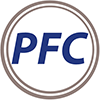As I was working on optimizing a client’s computer in Scarborough on Wednesday, I ran across an interesting little issue while trying to print in Adobe Reader X (specifically version 10.1.8). The client had complained that printing wasn’t working from this application, but worked from other applications like Microsoft Word.
Well, It turns out that there’s a bit of a design problem with the Adobe Reader Print dialogue box on monitors with low resolution settings for their monitor. As you can see in the following figure, the dialogue box is too long to fit on the screen all at once:
In the figure above, you can actually
just
see a hint of the “Print” button, below the translucent Windows taskbar at the bottom of the screen.
So, let’s scroll down and press that button, and we’ll be done, right? Since the client uses a wireless USB mouse with scroll wheel, the natural tendency is to use the scroll wheel on the mouse to get to the bottom of this Print dialogue box.
But, wait! Pay attention to the colours in the figure above. There’s a big clue here. Remember that if something is highlighted in blue (using the default Windows color scheme), then it is it currently selected , and so it has active focus . In this case, the name of the printer is blue – it was automatically selected from the moment this dialogue box appeared. (A silly choice on Adobe’s behalf, perhaps?). Because of this, when you scroll the wheel on the mouse, you will scroll through all available printers, instead of scrolling down to the bottom of the window.
“ Printer s, you say?! But I only have one printer! “, you may be saying. Well, the funny thing is that both Windows and Microsoft Office like to lump other things into the list of available printers. So more often than not, you’ll have other things listed alongside your printer, even if they’re not physical devices that sit on the desk beside your computer. Common examples of other “devices” listed as printers in Windows include:
-
Send to OneNote 2007
- Send to OneNote 2010
- Microsoft XPS Document Writer
- Fax
And this was exactly the case with the client’s computer, which had “Send to OneNote 2010″ as an option (
Click here to find out what OneNote is
).
And so, scrolling the wheel on the mouse changed the printer from the correct Brother model, to “Send to OneNote 2010″, like so:
Figure: Scrolling the Mousewheel changes the Printer
What’s interesting is that you can’t even do the standard trick of clicking on a non-active part of this dialogue box, in order to deselect the printers. That’s usually a good way to stop selecting some undesired area, and be able to scroll the whole window as desired. But not so, this time. (Again… I feel as though Adobe dropped the ball, in this case).
Your only recourse is to go to the scrollbar on the right side of the dialogue box, and use the mouse cursor to drag this scrollbar down. Yes: Like you had to in 1996 before mouse wheel were invented:
Figure: Use the Scrollbar instead of the Mouse Wheel
…And, voila! There’s your Print button.
Caption: The Print Button fully revealed after scrolling to the bottom, using the scrollbar
The solution is ridiculous, yes. Hopefully, Adobe will catch wind of this little glitch, and fix it subsequent versions.
As a web designer, I know firsthand how difficult it can be to create software & webpages that will look good on all different screen resolutions. It’s a daunting task, and so at some point, a designer may decide to let go of supporting older resolutions. But, in this case, my client’s computer was hardly set to something particularly old or unusual. I wonder if the designer of this print dialogue box forgot that not all users prefer screen resolutions of 1366×768 and higher.
In fact, 1024×768 is still surprisingly popular as of December 2013! For more information, you can check out this well-update online resource regarding screen resolutions that are currently in use around the world:
http://www.hobo-web.co.uk/best-screen-size/
.
This problem occurred for me on an hp pavillion 7000 series laptop, running Windows 7 Home Premium (64-bit), with Service Pack 1 installed.
